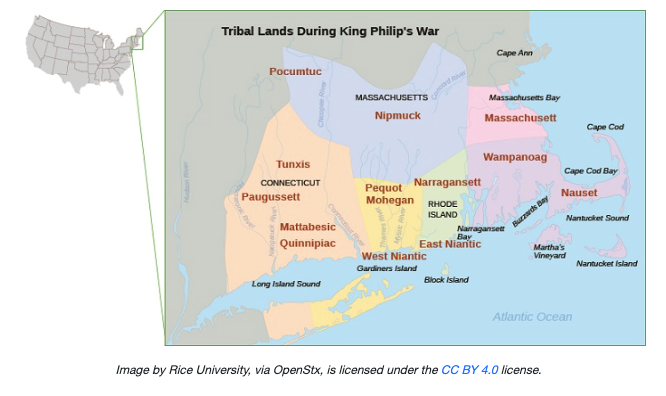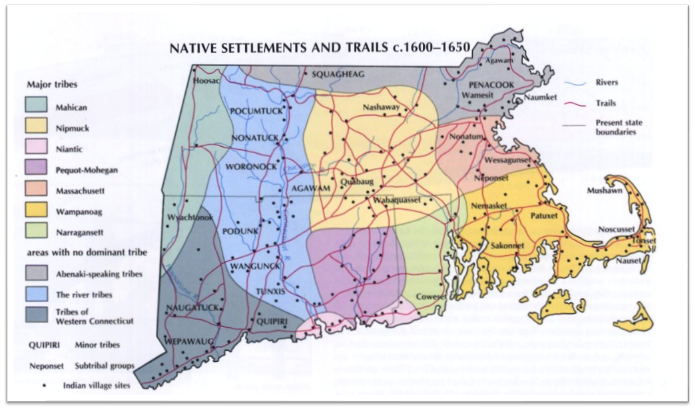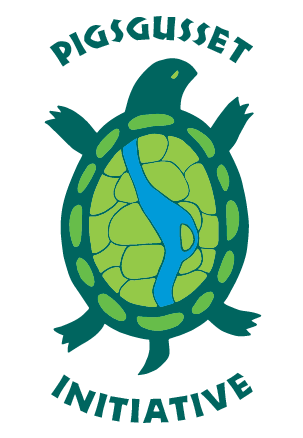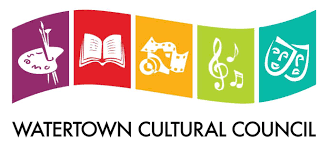
Listen to Sipu
May 11, 2023
Creative Team
Historical Information & Educational Resources
Read & learn more about local Indigenous History
Step One: Reviewing Two Maps ---- (Link to Maps in Slides)


- For over ten thousand years, the place we now call Watertown was the seasonal home to the Pequossette band of the Massachusett Tribe. They lived here mostly in spring, summer, and fall and referred to this place as Pigsgusset, or Meadows at the Widening of the River. Their society was built around family relations and caring for one another and the earth. Quinobequin is their name for the river that is today referred to as the Charles. There were no dams on the river then and the fish, which mostly lived in the ocean, could freely ascend the freshwater river to spawn in the spring or summer months.
- The Pequossette hunted deer and rabbits, fished for bass, sturgeon, and alewife, and cultivated corn, beans, squash, and other crops. Humans, animals, trees, plants, insects, the land, and the elements of earth, wind, water, and rock made up the circle of life. The people knew where and when and how to harvest berries and fruit, roots and medicinal plants, nuts and herbs. They took only what they needed and left the rest. They smoked meat and fish, dried fruit, berries, beans, and corn, and roasted squash and nuts, and stored them underground for the winter months. They called their homes Wetus or Wigwams, and lived in villages.

- Hundreds of years ago, in the 1500s and 1600s, Europeans sailed across the Atlantic ocean to fish and trade with the Indigenous peoples who had lived here for thousands of years. The Europeans brought with them diseases that spread terrible sickness and tens of thousands of Indigenous people died in New England. This sad time was called The Great Dying (1616-1619). Those who survived regrouped and began to rebuild their societies.
- Soon after, hundreds and then many thousands of English sailed across the Atlantic ocean to settle here. They said no one lived here and the land was theirs for the taking. English kings and queens also claimed the land as theirs. And the Massachusett, Wampanoag, Narragansett, Pequot, Wabanaki, Nipmuc peoples who survived The Great Dying claimed this as their homeland as they had for thousands of years.
- In 1630, 40 English families came to settle here and in 1638 they were ordered to change the name of this place from Pequossette to Watertown.
- When more and more English came, they pushed the Pequossette and other Indigenous Peoples out of their homelands. The English passed a law to create Christian Indian villages, later known as Praying Towns, to put the Indigenous people in one place to change their ways and beliefs. Missionaries pressured them to give up their culture, ways, and beliefs. About 2,000 Indigenous people lived in Praying Towns and the closest Praying Town to Watertown was in Natick where hundreds of members of the Massachusett Tribe lived in English houses, wore English clothes, ate English food, learned to speak the English language, and worshiped in English churches. Many lived there as a way to survive being pushed out and weakened by disease, not because they wanted to give up their beliefs, culture, or land.
- In 1671, the English demanded that the Indigenous people give up their guns. Pometacomet, also known as Metacom, Metacomet, and Philip, thought the English wanted to take all of their land and destroy their way of life. He reached out to the Narragansett, Nipmuc, Pocumtuck, Nashaway, and others to join him in fighting the English. Two Indigenous tribes, the Pequot and the Mohegan, fought on the side of the English. After Pometacomet’s Resistance/King Philip’s War broke out in 1675, up to a thousand Indigenous peoples from Natick and other Praying Towns, mostly members of Nipmuc Nation, were rounded up on a cold October night, put into shackles, loaded into horse-drawn wagons, brought to Watertown, transferred to canoes, taken down the river to big ships that awaited them in Boston Harbor. Then they were taken to Deer Island in the harbor and left there without food, medicine, shelter, or proper clothing. They were mostly children and women. If they tried to leave the islands, the settlers who guarded them were ordered to kill or destroy them. Of the hundreds forcibly taken there, only 167 people survived.
- Pometacomet’s Resistance/King Philip’s War was the biggest war in New England at the time. Indigenous peoples and English settlers clashed in more than half of towns and villages that existed. About 3,000 Indigenous people and 600 settlers died.
As Watertown grew as a settler colonial community, an official seal was adopted in 1870, which shows two men exchanging goods: a Pequossette man offers a fish to an Englishman who offers a biscuit.

Upcoming at New Rep
Join the New Rep E-mail List




